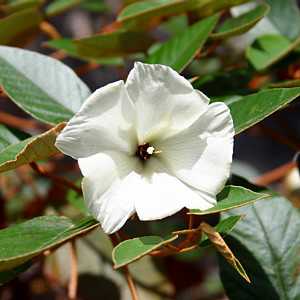
Two St Helenas?
Our mythical sister island
Myths are fun, as long as you don’t confuse them with the truth.{f}
⏱ QUICK READ
For at least sixty years, in the late 17th and early 18th Centuries, it was widely believed there were two St Helenas… On this page we illustrate the error on the old maps and put forward our explanation as to how it might have occurred.
Ortelius’ ‘World Map’ from 1570
Ortelius’ ‘World Map’ from 1570 (extract, below) shows St Helena in broadly the correct position.
This is remarkable because if you look at the full map South America is just a blob, as is Australia, and North America is far wider than the reality.
But eighty years later something peculiar had appeared…
Maps of the 17th and 18th Centuries
Consider the map below, published in Paris in 1664 by Pierre Du Val. It clearly shows St Helena, at roughly the correct latitude (around 16° South), but rather too far to the east (shown at around 18° east - its actual position is 15°55’24.3”S; 5°43’3.5”W{2}).
But that isn’t all. Shown at around 16° South, 29° East is another St Helena, labelled on the map as ‘I Ste Helene la Nouvelle’ (‘New St Helena’).
This second St Helena is quite a common occurrence on maps for the next sixty or so years. Some are shown below:
The full Heinrich Scherer map, one of the earliest near-accurate maps of the globe, is truly a work of art with many fascinating features. You can download itⒾ. The Matthaeus Seutter map is the last we have found with the error. You can download the full mapⒾ.
One contemporary writer even claimed to have been taken to ‘S. Elena Nueva’ - twice! - as a prisoner of the Portuguese, describing the place as very flat and difficult to discern even a few miles out to sea.
So where is this second St Helena?

Reynolds’ Map of Africa, 1771
The short answer is: nowhere. It doesn’t exist, and never did{3}.
The explanation for its appearance on old maps is quite simple. At the time these maps were made, navigation was a fairly inexact science{4}. Map-makers did not have the benefits of Google Earth™. Sailors could fix their latitude reasonably well, based on the positions of the stars, but longitude was more of a problem because it depended on knowing how much earlier (or later) the sun rose where they were as compared to London - not an easy calculation when clocks were primitive and largely based on pendulums which did not work onboard a rolling ship. John Harrison designed his first ‘marine clock’ in 1730 and did not develop a working device until 1764. Until then, fixing one’s longitude was more an art than a science.
Given this, and given also that communications between rival mariners were limited, it’s not surprising that two ships heading up the Atlantic from the Cape and encountering St Helena could come to the conclusion they were at two (or more) entirely different longitudes, and hence think they had encountered two different islands. Journeys were also rare, so a ship encountering St Helena the first time might well not repeat the voyage and so would not notice that the second St Helena was identical to the first!
It is not clear when the myth of the second St Helena was finally laid to rest. Certainly Reynolds’ ‘Map of Africa’ from 1771 (right) shows only one{5}, whereas Matthaeus Seutter’s 1741 map (see above) shows two, so we can assume it was sometime in the mid 18th Century (about the time John Harrison’s navigational clock came into use).
Some say the existence of the island had effectively been disproved as early as the 1680s, when several ships of the Dutch East India Company (VoC) set out to find it, in vain. These included the ‘Leonen’ in 1660, and the yacht ‘Maria’ in 1678, the latter having spent two fruitless weeks in pursuit of New St Helena{6}. But news of this non-discovery evidently didn’t reach map-makers until many years later.
It should also be noted that the location of New St Helena, based on these early maps, would be somewhere between ½ and ⅗ of the way between real St Helena and the coast of (what is now) Angola. As the modern undersea contour map (below) shows, this would put New St Helena in the middle of the undersea trench ‘The Angola Basin’, so any claim that New St Helena did exist but has since sunk beneath the sea is not credible.
‘St. Matthew’s Island’
You will also notice on some of the maps above a place called ‘St. Matthew’s Island’, north-east of Ascension Island.
Galvano’s ‘Discoveries of The World’ (1555) reports:
… passed by the Islands of the Canaries, and went to Brasill where they found an island in two degrees, and named it S. Matthew: and it seemed to be inhabited, because they found in it orenge trees [and other fruit trees, traces of] hogs, and hennes in caues, and upon the rindes of most of the trees there were grauen Portugall letters, shewing that the Portugals had beene there 17 yeeres before that time.
This also did not exist{3}. Which island the early navigators had actually encountered here is not clear - it might have been Ascension Island, except for one description of it having a small lake of fresh water.
On his second voyage James Cook sailed on Resolution from St Helena on the 21st May 1775. On the 31st May he left Ascension Island and steered to the northward with a fine gale at S. E. by E., reporting that I had a great desire to visit the island of St. Matthew, to settle its situation; but as I found the wind would not let me fetch it, I steered for the island of Fernando de Noronha, on the coast of Brazil in order to determine its longitude, as I could not find this had yet been done. Resolution carried on board Kendall’s K1 chronometer, the first survey ship to carry such an instrument, and had St. Matthew existed it would doubtless have been charted with some accuracy.
Despite this, it still appears on the German map (below) from 1828, proving that news in those days took some time to spread…
Note, however, that there was only one St Helena…
Even our (real) island’s name is uncertain
If all of the above wasn’t enough, even our island’s name is uncertain!
Wikipedia doesn’t want to know this…
We tried to create a page about the mythical St Helena on Wikipedia, but got the message back:
This submission’s references do not adequately evidence the subject’s notability.
(The references were this page and John Grimshaw’s blog{7}.)
Put simply, Wikipedia doesn’t think the mythical St Helena is interesting enough to merit an article.
Credits:
{a} William Berry, London{b} Heinrich Scherer, Munich{c} Herman Moll, London{d} Nicholas De Fer, Paris{e} Google Maps™{f} Richard Dawkins, in ‘The Magic Of Reality’ (2012)
Footnotes:
{1} Africa iuxta navigationes et observationaes recentissimas aucta, correcta et in sua regna et status divisa / in lucem edita a Matth. Seuttero, s. Caes. maj. geographo aug.Seutter, Matthaeus, 1678-1756, cartographer. After 1741.{2} Location of Jamestown according to latest GPS data.{3} See other debunked myths.{4} If that’s quite the right word!{5} However it does show St. Matthew’s Island.{6} It is said the Dutch were anxious to colonise it, as a complement to their Table Bay anchorage, having failed some years earlier to take the real St Helena from the English.{7} See more blogs.

